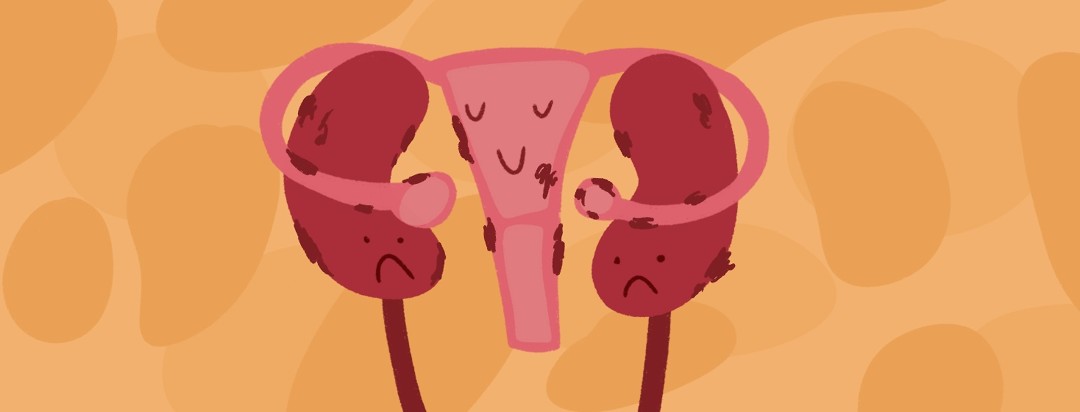Endometriosis of the Kidneys and Bladder
Endometriosis is well known for causing pelvic area problems, like painful periods. As if that wasn’t hard enough, endometriosis can show up in other parts of the body, like the urinary tract. The urinary tract includes all the organs that handle urine: two kidneys, two ureters (the tubes connecting the kidneys to the bladder), the urinary bladder (the pouch that stores urine in the lower belly), and the urethra (the tube that carries urine from the bladder to outside the body).
Endometriosis in urinary tract
Endometriosis in the urinary tract is uncommon, affecting between 1 and 12 percent of people with endometriosis. People with deep infiltrating endometriosis (DIE) are more likely to have endometriosis of the urinary tract.1,5
Bladder endometriosis
In the urinary tract, the bladder is the most common place for endometriosis.3 It can be on the outside surface of the bladder (inside the pelvis) or inside the bladder.4 This can cause frequency (feeling like you need to empty your bladder more often than normal) and urgency (a feeling that you need to get to the bathroom NOW). You might also have pain over the bladder (in the lower belly, just above the pubic bone) or when emptying the bladder, or you might see blood in the urine. It can feel the same as a UTI (urinary tract infection). It may feel worse before your period and get better afterward.
Endometriosis sometimes damages the ureter and blocks it. This causes the ureter above the blockage to stretch out (imagine a full water balloon). This is more common on the left side.5 A person may not feel this happening at all or might just notice their usual endometriosis symptoms. It could also feel like a kidney stone, with pain in the middle and lower back, or like bladder endometriosis. If the blockage remains over time, this can also injure the kidney.
Endometriosis in or on the kidneys
In rare cases, endometriosis forms inside or on the kidneys themselves. For instance, cysts filled with blood can grow on the kidneys, like the chocolate cysts that endometriosis causes on ovaries.
Symptoms
Because endometriosis of the urinary tract may not cause any symptoms, or it might just feel like your usual endometriosis, it can be hard to spot. Your healthcare provider may start with a pelvic exam, a urine test, and possibly some blood tests. They may recommend an ultrasound, CT scan or MRI of the kidney area.2 A urology specialist might do a test called cystoscopy: using a tiny camera to look inside the bladder.
Treatment options
Treatment choices will depend on your individual situation. Medications may help with bladder discomfort. Hormones can shrink the endometriosis. In some cases, a tiny tube can be placed in the ureter to keep it open. Your doctor might recommend a laparoscopy if the cause of the problem is not clear, or when the ureter is completely blocked. They may also suggest a combination of surgery and hormone treatments.
Because endometriosis of the urinary tract affects multiple body areas, your OBGYN may work closely with other specialists to get you the ideal care. Be sure your team members are communicating well so that, together, you can create the plan that’s best for you.

Join the conversation